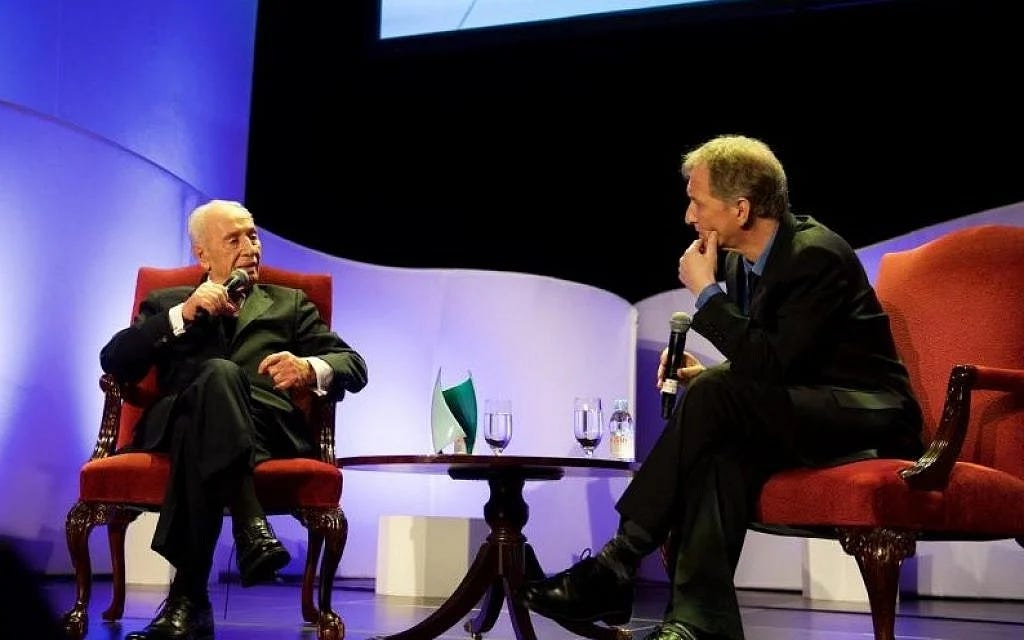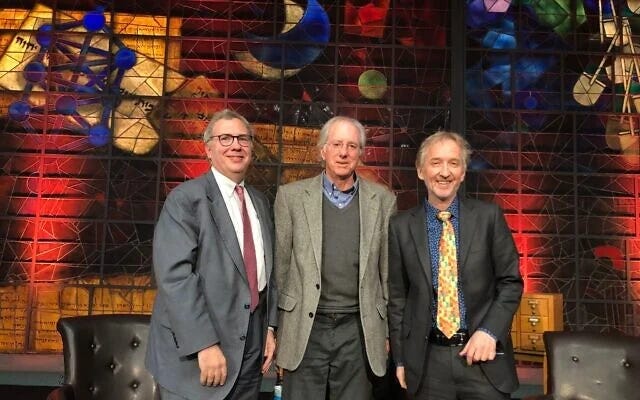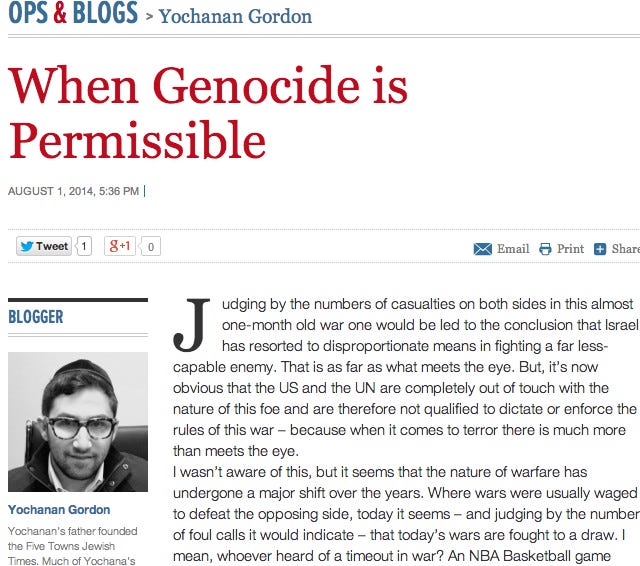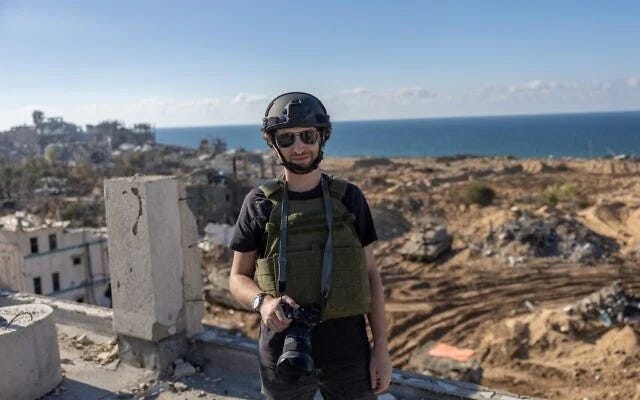Have you ever felt the thrill of a sports commentator during the final moments of a decisive match, shouting excitedly: “A shot in the dying seconds”? Or have you lived through a moment when you realized that "a late arrival is better than permanent absence”?
If you've experienced either of these reactions—psychological or social—centered around time as a critical axis of engagement, you will understand the vital role time plays for an entity built on a feverish race against time slipping away, and whose greatest fear lies in a regional or global compass that no longer points to it—neither north nor south.
From this foundational fear, etched into the Israeli psyche since its first day on Palestinian land and permeating all its structures—haunted by a decline its creators believe could come too soon—sprang the online newspaper The Times of Israel. A child of that final moment, a rupture in perpetual absence, it has become a new lifeline tethering Israel to a shifting Western world, rekindling the relationship both longed for and imposed, hoping to preserve a connection.
This article is part of a broader investigation tracing the history of Israeli media, or what is known as the Zionist press network—its newspapers, media centers, their origins, challenges, militarized roles under media cover, orientations, and decades-long influence over our minds from peace agreements to revolutions, wars, and alliances, all of which have exposed a fragile reliance on its narratives.
This time, the spotlight falls on The Times of Israel, the newest Israeli digital outlet, which emerged in injury time amid a crowded field of Israeli papers vying for a single readership.
But it targets a different reader—offering the same narrative in a different language, infused with stylistic polish and manipulative framing—until it became a direction unto itself: a sprawling octopus battling the enemies of its narrative in the region, in the West, and globally, wielding their language and its own sword and influence, aiming for total media dominance over the battlefield of words and narratives.
The Secret: Start Where Others Left Off
In 1983, a few years before the first Palestinian Intifada, David Horovitz—born in London—migrated to Israel amid waves of Jewish immigration to Palestine, defined then as an ascent, or aliyah, representing a spiritual and national elevation for the Zionist dream of a homeland for all Jews.
Shortly after his arrival and naturalization, Horovitz completed his military service in the Israeli army’s Education and Youth Corps, responsible for indoctrinating recruits and fostering patriotism, especially among new immigrants who didn’t speak Hebrew.
He then began working as an editor and reporter at The Jerusalem Post, using his British media connections to promote Israel’s narrative. But in 1987, with the outbreak of the First Intifada, Horovitz began to rethink Israel’s political future.
This marked a turning point for him. He came to believe that popular Palestinian uprisings proved that Israel’s military power alone couldn’t resolve the conflict and that a political settlement might succeed in ending the “violence and resistance.”
The world, he thought, viewed this as an internal struggle for rights, not a war with a foreign enemy—thus undermining the legitimacy of Israel’s harsh response.
Disillusioned with The Jerusalem Post’s hard-right tone, he left in 1990 to join the newly launched Jerusalem Report, a biweekly publication with a more centrist and left-leaning editorial stance.
From 1990 to 2004, Horovitz championed political dialogue between Israel and the PLO, advocating long-term solutions and negotiations. He criticized what he termed “hardline stances” in Israeli politics, favoring diplomacy over force.
During this time, he also made literary contributions reflecting his evolving political views. He co-authored the biography of Israeli Prime Minister Yitzhak Rabin, Shalom, Friend: The Life and Legacy of Yitzhak Rabin (1996), which won a National Jewish Book Award in the U.S.
This recognition propelled him to the role of editor-in-chief at Jerusalem Report in 1998, and in 2000 he published another book: A Little Too Close to God: The Thrills and Panic of Life in Israel.
But the romance with idealism didn’t last. The Second Intifada, with its intensified armed resistance and diminished civil protest, shifted his stance. Horovitz returned to the right, accusing the Palestinians of escalating violence and betraying Israel’s outreach.
Seeing Jerusalem Report as too moderate, he rejoined The Jerusalem Post in 2004 as its editor, where he advocated hardline policies, increased military action, and total security dominance—including separation walls and military incursions.
That same year, he released Still Life with Bombers: Israel in the Age of Terrorism, reflecting his new conviction: there was terrorism, and only Israeli society’s resilience could ensure normalcy amid fear. He partly blamed Yasser Arafat for “squandering” peace at Camp David and criticized Western media for portraying Palestinians as peacemakers and Israel as the aggressor.
Between 2004 and 2011, Horovitz led The Jerusalem Post, amplifying Israel’s most extreme media positions, serving as its public voice on international stages, and promoting himself as a moderate liberal defending democratic Israel against threats to its sacred security.
His diplomatic and media stature led him to perceive a gap between Israel and global audiences—a "misunderstanding" of its security needs. That realization prompted him to found a new digital outlet in 2012: The Times of Israel.
The timing was crucial. Israel, after its 2009 war on Gaza and amid the Arab Spring, found itself again besieged, as in its early days. Global audiences were listening—politically, economically, and socially—to the Boycott, Divestment, and Sanctions (BDS) movement.
Horovitz saw that Israeli discourse was fragmented and lacked a strong Western media base. Even BBC, The Guardian, and The New York Times criticized Israeli policies. Al Jazeera became a powerful regional adversary to Israel’s media narrative.
In short, Horovitz understood that Israel’s next war would be waged not just on battlefields but in the media—what he called “the second front.” So he launched The Times of Israel, an English-language news site to fight Israel’s narrative war globally.
Step by Step Toward Narrative Dominance
In 2015, Hebrew University President Prof. Menachem Ben-Sasson praised distinguished alumni shaping Israel’s image. Among them were Dorit Beinisch in law, Yuval Steinitz in politics, and David Horovitz in media—recognized for his profound influence on Israeli public diplomacy.
At just three years old, The Times of Israel had already eclipsed every English-language Israeli outlet. Its articles appeared in The Times, The Independent, and The Washington Post, and its staff regularly featured on CNN, BBC, Sky News, and Fox. Horovitz led briefings for visiting foreign delegations.
The project wasn’t accidental. The paper was launched with significant investment from American billionaire Seth Klarman and added features previously unseen in Israeli media.
It combined paid and free content, hosted an open blogging platform with over 9,000 contributors, all pre-screened for alignment with Israeli policy. It also introduced paywalls without diminishing reach, even as print papers like Israel Hayom lost readership.

Within two years, readership hit 2 million. By 2017, it climbed to 3.5 million, and by 2021, it surpassed 9 million users, averaging over 35 million monthly page views.
The paper attracted top English-language journalists from Haaretz, such as Joshua Davidovich and Raphael Ahren, and former Jerusalem Post writers like Amanda Borschel-Dan, now deputy editor and podcast host.
Horovitz articulated the mission in his inaugural editorial: to provide accurate, engaging coverage of Israel, bridge media gaps, counter global bias, and broadcast Israel’s story to the widest political, academic, and diplomatic audience through calm, analytical storytelling.
Multilingual Expansion and Regional Penetration
The site launched Arabic, French, and Persian editions—edited respectively by Palestinian journalist Suha Khalifa, French editor Stéphanie Bitan, and Avi Davidi. The Arabic and French editions debuted in early 2014; the Persian version followed in October 2015.
These editions served Israel’s outreach goals: Arabic content fostered ties with Gulf states; Persian content targeted Iranian dissidents; French content catered to French Jewish immigrants to Israel.
Even the blogging platform allowed grassroots voices to amplify Israel’s narrative—not to represent alternative views, but to reinforce the Israeli perspective in the languages of the "other."
This positioned The Times of Israel as a soft-power, digital diplomacy tool, pushing a narrative of “conflict and coexistence” over “occupation and self-determination.” It aligned with Israel’s foreign ministry and strategic affairs unit, focusing on:
Portraying Israel as a democratic state under threat.
Fighting BDS and criticism.
Improving Israel’s image in academic, media, and international circles.
It also aligned with the global Jewish lobby by highlighting Jewish transnational activism, reinforcing Jewish national identity, and combating antisemitism.
Its third mission: capturing Western public opinion—especially American, British, and French—via partnerships with AIPAC, CAMERA, ADL, and StandWithUs.
From Justification to Indoctrination
The platform soon became a hub for promoting normalization, actively engaging Arab academics and journalists abroad who echoed Israeli perspectives.
It uniquely featured Palestinian voices promoting “balanced” views—like interviews with Saudi Foreign Minister Faisal bin Farhan and UAE diplomat Omar Saif Ghobash, who praised the Abraham Accords as helpful to Palestinians.
It covered high-profile meetings like Anwar Eshki’s 2015 public engagement with Israeli officials in the U.S., framing them as breakthroughs.
Even without high-level access, it quoted anonymous Arab diplomats from Egypt, Jordan, and Qatar—especially after October 7, 2023—to dilute support for Hamas and reframe resistance.

It ran exclusive phone interviews with Syrian opposition officers promising future peace with Israel and covered pro-normalization voices like Egyptian-American Hussein Abu Bakr and Syrian businessman Shadi Martini.
It spotlighted figures like Rawaan Osman, a self-proclaimed Arab Zionist who appeared in videos with Israeli military spokespersons and gave speeches at the UN Human Rights Council, attacking Arab support for Hamas.
These efforts were channeled by journalist Elhanan Miller, an Arabic-speaking Israeli and religious studies graduate, who interviewed Hamas officials, hosted educational interfaith videos, and became a key figure in Israel’s Arabic media strategy.
Miller, later a rabbi, collaborated with Arab contributors like Thanaa Jawabra—who denounced Palestinian resistance as bloodthirsty—and received support from Saudi-funded interfaith initiatives.
By April 2025, The Jerusalem Post dubbed him “Israel’s voice from Jerusalem,” praising his tactic of using cognitive dissonance—criticizing his own government on Arab TV as a show of Israeli democracy.
Who Are We? According to The Times of Israel
Across its multilingual coverage, the Palestinian appears only as a troublemaker, stripped of victimhood and human rights. Like other Israeli media, the paper erases the occupation narrative, reduces violence to “security operations,” and dismisses the two-state solution.
It presents itself as liberal, democratic, and tolerant, while subtly enforcing a far-right ideology: Palestinians must surrender all claims—statehood, return, sovereignty, economy, and freedom—before any of their rights are acknowledged.
Arabs are portrayed as either "moderates" who accept Israel’s superiority, or ignorant masses, unqualified to understand Jewish history. As Miller says: “If I address them directly, it won’t help—they lack the cultural or historical framework to grasp it.”
In the end, Horovitz embodies the dream of The Times of Israel. Miller, its seductive face, speaks Arabic, knows the Gulf better than his own people, and answers questions about Judaism—but never about Palestinian rights.

The real tragedy, from their view, is that Arabs don't understand the Jewish people or why they came to Israel. To bridge this gap, there’s always an eager Arab ready to polish their image—for nothing more than a pat on the back, whispered off to the side, like an apology for presumed ignorance.
And so, the entire scene collapses into one crowded description: the journey from asking "Who are we?" to confidently asserting, "Who they are."







